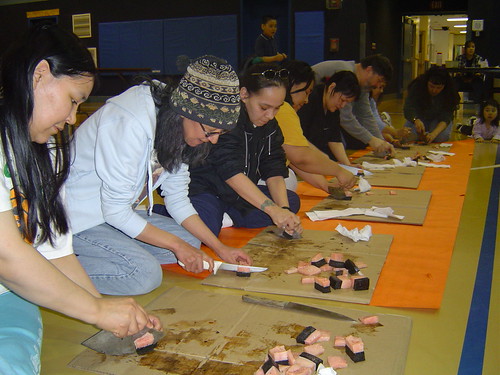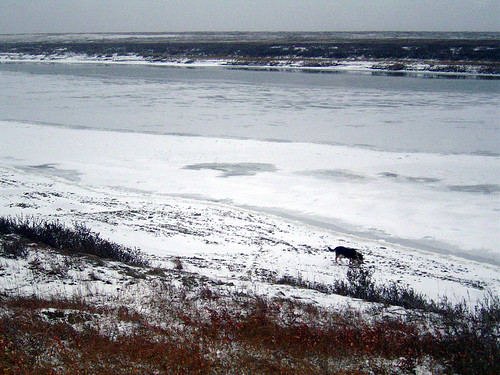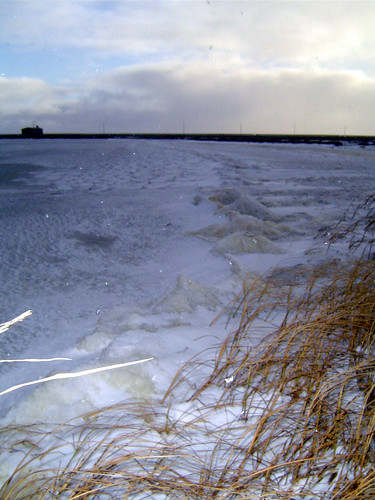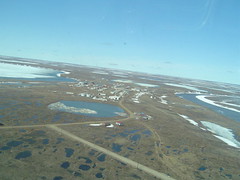On Halloween night, after trick-or-treaters have safely stowed their treasures at home, everyone gathers at the community center. The competition that follows is based on an ancient Inuit game that is much older than the earliest memories of any elder. Costumed participants take turns dancing to music each hoping to elicit the most uproarious laughter from the audience. Only the silliest and most absurd dancers win a prize. Although the costumes can be slightly unnerving, the activity isn’t intended to frighten. The night is centered on one of the most cherished of Inupiat values…laughter.
The Inupiaq language dictionary defines Puuqtaluk, quite simply, as the celebration of Halloween. After considerable inquiries on the subject, I am faced with the dissatisfying conclusion that no one really knows how or when Puuqtaluk and Halloween initially tied the knot. But, in spite of its dubious origins, the union does appear to be a happy one.
Since Puuqtaluk is still a couple of days away, I'll share a few photos of Halloween past and follow up with photos of this year's competition later in the week. You'll find that the activities, as well as the smiles, are quite familiar and provide something of a bridge between past and present, old and new, and two cultures that have more in common than one might think.
********************
Click on any photo for a larger image or to see more.
Painted faces can't hide the smiles of these not-so-frightening beauties. Of course, the face paint only stayed on about thirty minutes before they started complaining that it was "itchy" and washed it off. But, it was a lot of fun while it lasted.

Pumpkin carving is a favorite among the activities at school. Pumpkins are flown in a few days prior to Halloween. I wouldn't even venture a guess at what expense. But, as you can see, the boys pictured are having a blast cleaning the slimy "guts" out of their pumpkin. It's hard to nail down exactly how much a great experience is worth.

Most classes save the seeds and bake them with lots of seasoning. It's become a tasty tradition that everyone looks forward to.

Last year, the fifth and sixth grade class made pies with their pumpkins. They proudly shared the pies with the elders who visited at lunch time.

These kindergarten students excitedly display their entry in the pumpkin carving contest. I'm pretty sure their teacher controlled the knife while the students had a good time adding feathers to their creation.









































